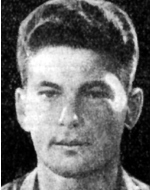Zamir, Yitzchak
Son of Rachel and Avraham, was born on June 21, 1924 in Warsaw, the capital of Poland, and immigrated to Israel in the month of Nissan, 1933. He completed an elementary school in Tel Aviv and the “Titz” school in Yagur. He had a deep memory and knowledge of the Bible, grammar, history, nature and knowledge of the land. Yitzhak wrote poems, worked in painting and participated in writing compositions and puzzle puzzles in the Young Judea student newspaper and in a writing competition he won a prize. He served in the Palmach from 1948 and joined the kibbutzim Eilon, Maabarot and later a founding member of Kibbutz Evron, where he worked in various branches of the agriculture. He was a cultural guide and a shepherd. In the course of the Palmach’s tour activities, he expanded his knowledge of the nature of the country, where he lived in the school, the nucleus, the kibbutz and the army. While serving in the Negev, he continued to be interested in local vegetation. Collected and defined more than 400 varieties, and in this work aroused the attention of professionals and experts. After completing a training course for Hashomer Hatzair counselors, he was about to be sent abroad for an internship, but postponed his trip until the end of the war. Yitzhak served in the Negev Brigade as a reconnaissance officer, an electrician, a trainer in various weapons and sketches military maps of the Galilee and the Negev. He participated in all the brigade’s activities and discovered a special skill in planning and carrying out the conquest of Be’er Sheva. He took pictures of enemy positions from the air, participated in 24 flights, and on the last reconnaissance flight during Operation Horev to remove the Egyptian army from Israel, his plane was shot down and crashed near Auja al-Hafir on December 28, 1948). He was buried in Beit Eshel. In his last letter, on the eve of Hanukkah 5709 (the letter arrived at the time of mourning), he blessed his parents with the blessing of the Hasmonean holiday of those days and time, and a month later he was transferred to the eternal rest of the cemetery at Kibbutz Evron. A year after his death, his parents gathered his estate in a memorial book, “The History of Isaac.” A considerable portion of his lectures are written on: a) the Bedouin tribes in the Negev; b) a collection of plants in the Judean desert and the Negev; And its influence.
